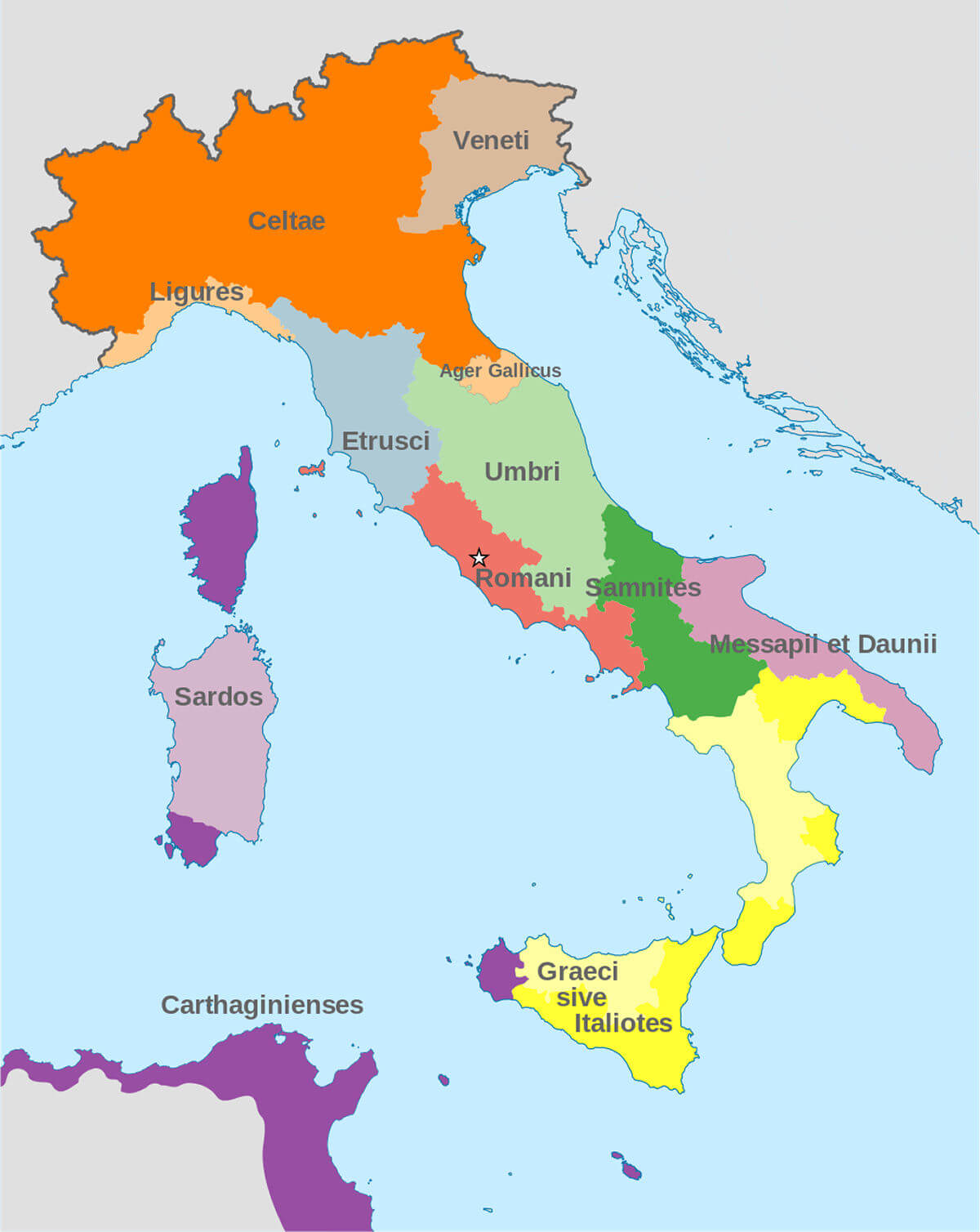Since the Gallic sack of Rome in the early 4th century BC, Rome had became increasingly dominant within Latium and among her Latin neighbors. With the end of the First Samnite War, the Romans had taken control of Campania, and the people there gladly entered into an alliance with Rome.

Halibutt, CC BY-SA 4.0, via Wikimedia Commons
A map of Italy in the 4th century BC, showing various tribe confederations/alliances/groups in the wake of the Latin War. Borders are approximate. For clarity the northern border of modern Italy is marked, in reality the Celtic tribes extended way beyond that line.
The Latins, having fully aided Rome in the war, expected equal treatment in regard to the spoils, and therefore continued to harass the Samnites despite overtures towards peace by Rome. The Latins and the Campanians both feared Rome's rising power, and that their allied relationships were really relationships of domination.
While the Latins continued action against the Samnites, they asked Rome to intervene on their behalf and stop the fighting. The Latin League would view this as a continued effort to dominate, and an already shaky relationship would only worsen. The Latins demanded equal status among all the league members, and a share of the governing of Rome which was, unsurprisingly, rejected.
Campania and Capua joined with the Latins in an open revolt which came to be called the Latin War, while Rome's recent and future enemy, the Samnites, sided with Rome.
In 340 BC, the Latin War opened with an overwhelming victory for Rome. Under the command of Consul Titus Manlius Imperiosus Torquatus, Roman Republic legions - along with Samnite support - crushed the Latins and Campanians at the Battle of Trifanum.
The Campanians immediately capitulated and fell back into Roman control, while two years of bitter fighting would be needed to stamp out Latin resistance. In 338 BC, Rome dismantled the Latin League and came to terms with her neighbors, offering considerable rights while increasing her own authority.
With Roman victory, some of the Latin city-states were fully incorporated within the Republic, while others were given rights to lesser Roman citizenship. Commercium, the right to conduct business with Rome, and Connubium, or the right to inter-marry between tribes, were two of these rights granted, but were limited to interaction with Rome and not between each other. The making of alliances was reserved only for Rome, and the city-states lost any sort of autonomy in this respect.
The right of civitas sine suffragio, citizenship without the right to vote in the popular assemblies, would become the standard Romanization policy that would build the Empire.
The Latin rights, or ius Latii, were a stepping stone for newly-absorbed communities to feel a part of Rome, while being required to show their acceptance of Roman rule before gaining full citizenship.
In most cases, while each city state was granted various additional benefits or denied rights, depending on the circumstances, the Latin cities no longer had to pay taxes, but instead were required to provide men for the legions.
Most cities were allowed to keep their governing system under the control of the same elite classes, only under the supervision of Rome.
The general effect of the Latin War was to strengthen Rome's grip upon Latium and the Italian peninsula, and to provide more lands upon which to settle. Rome now truly dominated all the Latins, and rather than acting as the most powerful member of an alliance, it became a centralized government.
The next couple of centuries would continue to see revolts by Italian communities, either over social class or various other issues, but with the elimination of the Latin League, Rome truly became the master of central Italy.
Roman Conquest of Italy - Table of Contents
- Introduction
- Veii and the Etruscans
- The Gallic Sack of Rome
- The Samnite Wars
- The Latin Revolt and the End of the Latin League
- The Pyrrhic War
Did you know...
The Latin League was originally a confederation of about 30 villages and tribes in the neighbourhood of ancient Rome that joined for mutual protection and defense against hostile adjoining communities.



